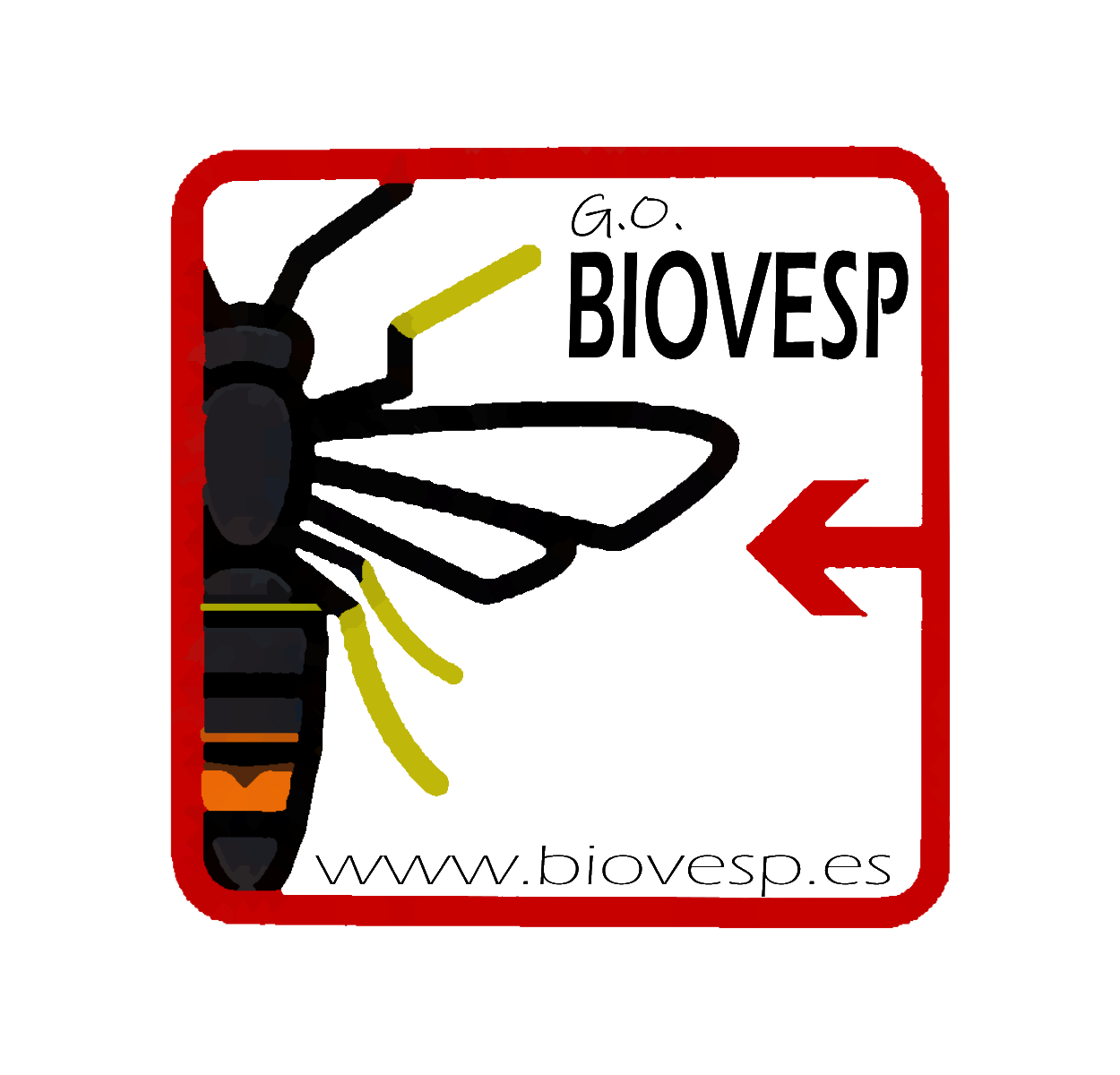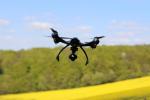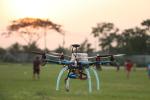
BIOVESP Operational Group: Integrated biological control of vespa velutina
- Type Operational group
- Status In progress
- Execution 2024 -2026
- Assigned Budget 558.363,37 €
- Scope Supraautonómico
- Autonomous community Asturias, Principado de; Cataluña
- Main source of financing CAP 2023-2027
- Project website GO BIOVESP
The main objective of the integrated biological control project of Vespa velutina is to develop and implement innovative strategies for the effective local management of this invasive wasp, minimizing its impact on native bee populations and beekeeping.
V. velutina is an invasive species spreading unchecked throughout the country due to its lack of natural predators. The presence of V. velutina causes problems in the socioeconomic, biodiversity, and public health sectors. This project focuses on the development of innovative integrated biological control strategies for Vespa velutina using novel approaches to achieve local control and reduce losses in the beekeeping sector through new products, integrated methodologies, awareness-raising and training for the public and beekeepers, and improving the vitality of hives and farms.
Development and production of new products For the practical implementation of the activities we will need three work elements:
- Traps for capturing organisms
- Attractants to complement the activity of traps
- Attractive with the control systems to be studied for application to live captures.
To capture Asian wasps, a commercial trap will be used, its structure modified to allow entry of V. velutina. For live capture, the same trap will be used, with a slightly conical plastic basket placed in the base of the trap. This basket will be inverted so that organisms entering the trap have limited contact with the attractant. This means they can consume it as food but will not be submerged, will not drown, and can be collected alive for testing. Based on commercial products used for human consumption, specific attractants will be designed for V. velutina capture and live capture traps. The project aims to compare the control effect on V. velutina of three types of products currently on the market. To this end, the following activities will be carried out: Installation of new hives Installation of capture traps and live capture traps The development of the trials will take place with the following steps: Installation of new hives Periodic control of the hives Installation of feeders Installation of traps Sampling Collection and analysis of data Statistical analysis Dissemination plan Writing of project reports
V. velutina is an invasive species that is spreading unchecked throughout the country due to its lack of natural predators. The presence of V. velutina causes problems in several areas: Socioeconomic: The Asian hornet feeds on insects, including bees, to meet the protein needs of its larvae. Adult insects feed on various sugary liquids such as flower and shrub nectar, ripe fruits, sugary aphid excretions, and tree bark sap. V. velutina hunts bees, trapping them in flight or preying on those found at the entrance.
Beehive predation induces stress, affecting bee health. Persistent attacks paralyze nectar and pollen collection, reducing the survival of bee colonies and significantly impacting the beekeeping sector. In the agricultural sector, these attacks impact pollination (bee predation generates changes in the frequency of flower visits and in pollinator behavior, affecting pollination services) and produce (many fruits are bitten and eaten by wasps, particularly in fruit trees near nests).
As the Asian hornet population expands, more resources are needed to minimize the damage caused by this species, which significantly increases the annual costs of these interventions. Beekeepers, farmers, and governments make significant investments of time and resources to minimize these impacts. Biodiversity: Asian hornets feed on many pollinating insects, which has a direct impact on pollination and an indirect impact on plants.
Native species are affected by invasions through other processes such as the transmission of pathogens, genetic contamination by hybridization, or competition for sometimes scarce resources (in the case of nectar, its consumption by an abundant population of invasive nectarivores promotes the displacement of native species), through competition that promotes the expansion of other invasive species and changes at the ecosystem level). Public health: The increase in the number of nests increases the risk of possible stings that can have serious consequences and generate health problems. Controlling the Asian hornet population is essential and necessary to try to control the uncontrolled expansion of the species and minimize the harmful and serious effects it causes.
To seek innovative strategies for integrated biological control of Vespa velutina using new approaches to control it locally and reduce losses in the beekeeping sector.
Test the use of entomopathogenic fungi, larvicides, and broad-spectrum biocides as part of integrated control. And develop an integrated control protocol for V. velutina.
- Development of new attractants and capture methods: Specific attractants for Vespa velutina are expected to be designed and developed from commercial food products, increasing the capture efficiency of existing traps.
- Trap design is planned to be optimized to improve the capture of Vespa velutina, considering aspects such as entry, retention, and recovery of captured organisms.
- Evaluating the Efficacy of Entomopathogenic Fungi: The goal is to determine the susceptibility of Vespa velutina to different strains of entomopathogenic fungi, identifying the most promising strains for biological control. The efficacy of entomopathogenic fungi in controlling Vespa velutina populations under laboratory and field conditions will be evaluated. Application protocols for entomopathogenic fungi for controlling Vespa velutina in nests and surrounding areas are expected to be developed. Evaluating the Effectiveness of Specific Larvicides: The goal is to identify and select specific larvicides that are effective against Vespa velutina larvae without negatively affecting bee populations or other non-target organisms. The efficacy of the selected larvicides in controlling Vespa velutina populations in nests and surrounding areas will be evaluated. Application protocols for specific larvicides for controlling Vespa velutina will be developed. Development of an Integrated Biological Control Protocol: The results obtained from previous research are expected to be integrated into the development of a comprehensive and effective Integrated Biological Control (IBC) protocol for the local management of Vespa velutina. The IBC protocol will include recommendations on the selection and application of attractants, entomopathogenic fungi, specific larvicides, and other control measures, considering factors such as location, infestation severity, and environmental characteristics. The IBC protocol is expected to be a valuable tool for beekeepers, pest managers, and decision-makers for the effective control of Vespa velutina and the protection of bee populations. Impact on Beekeeping and Biodiversity: The implementation of the integrated biological control strategies developed in this project is expected to contribute to a significant reduction of Vespa velutina populations in specific areas. The decline in Vespa velutina is expected to have a positive impact on native bee populations, reducing pressure on hives and improving colony health. Effective control of Vespa velutina is expected to contribute to the preservation of local biodiversity, protecting other pollinating insect species and maintaining ecosystem balance. Dissemination and knowledge transfer: The project's results are expected to be communicated through scientific publications, presentations at conferences and workshops, and educational materials for beekeepers, pest managers, and the general public. Training workshops for beekeepers and pest managers on the implementation of the integrated biological control strategies developed by the project are planned. Collaboration between researchers, beekeepers, pest managers, and decision-makers is expected to be fostered for the effective implementation of integrated biological control of Vespa velutina at the regional and national levels.
- Coordinator/entity name: Associació Estudi de la Mediterrrània BUFALVENT
- Postal address: Can Comarodona. Veinat St Amanç s/n. Disseminat Afores 61. Bustia 2. 1716 Anglès
- Coordinator/entity email: xaviermunill@bufalvent.net
- Telephone: 00 34 672614849
- Associació Estudi de la Mediterrrània BUFALVENT
- Associació Estudi de la Mediterrrània BUFALVENT







